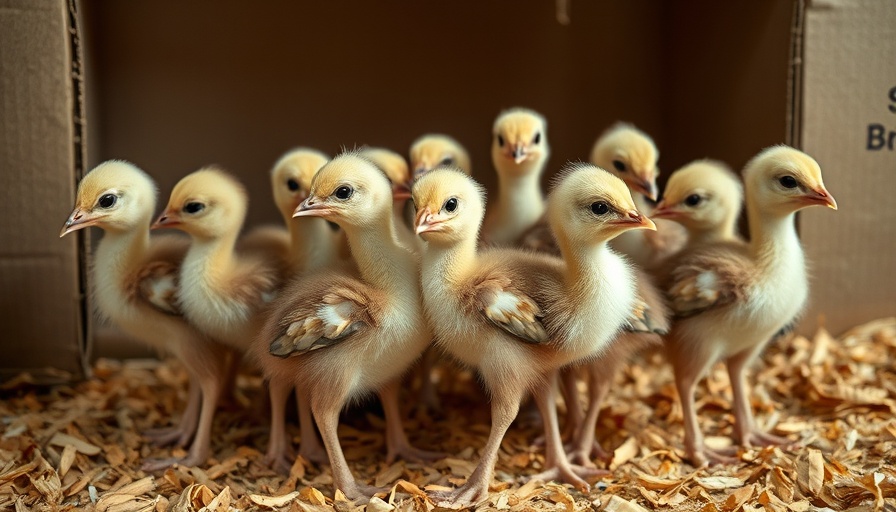
The Essential Guide to Brooding Turkey Poults
Turkey poults, the delicate offspring of turkeys, present unique challenges for poultry professionals. Unlike chicks, these little birds require specific care and attention owing to their heightened sensitivity to environmental factors like temperature, humidity, and drafts. As Jeff Smith of Cackle Hatchery® remarks, turkey poults are notorious for their lack of instinctive survival skills, making it imperative for those in the poultry industry to grasp the nuances of their care.
Setting Up the Perfect Brooder
Prior to the arrival of your poults, ensure the brooder is prepared well in advance. The establishment of a nurturing environment involves setting the heat source to a comfortable 95 to 100ºF, with cooler areas reaching 70 to 85ºF. Monitoring the temperature is vital since too low of a temperature can lead to problems such as piling and starvation. Analysis of poult behavior during the initial weeks allows for adjustments in temperature, ensuring their comfort as they develop their feathers.
Space Needs for Healthy Growth
Space is particularly important for turkey poults, which require significantly more than chicks due to their faster growth rate. Initially, allocate about 1.25 square feet per poult, doubling that space as they mature. Overcrowding can lead to stress and increased mortality, so being proactive about their space needs is essential for any poultry manager aiming to optimize production efficiency.
Feeding: A Critical Component
Turkey poults thrive on a protein-rich diet. It is recommended that you provide them with turkey starter rations or gamebird starters with protein levels between 28-30%. This rigorous nutritional requirement ensures they develop healthily and robustly. Moreover, setting up the brooder with marbles in the water can attract them to drink, which is critical since dehydration can quickly lead to health complications.
Understanding Poult Behavior
Observing poult behavior can provide key insights into their health and well-being. During their initial hours, poults spend a significant portion of their time resting, and any sudden changes in activity—like piling—can indicate discomfort or stress. Monitoring these behaviors can prevent risk factors that may lead to fatalities, ensuring a healthier flock.
Conclusion: Enhance Poultry Care Through Knowledge
For professionals in poultry management, understanding the intricate details of brooding turkey poults is essential for optimizing production and ensuring animal welfare. As industry practices evolve, staying informed on proper care methods can lead to significantly improved outcomes in both productivity and the health of your flock.
If you want to refine your poultry management skills further, consider attending workshops or seeking out additional online resources on poultry care. Your proactive approach not only defines your success but also contributes to the sustainability of poultry operations as a whole.
 Add Row
Add Row  Add Element
Add Element 



 Add Row
Add Row  Add
Add 
Write A Comment